When you are a college decathlete, you are first to arrive at practice and the last to leave. After all, you have 10 events – from sprints and distance races, long and high jumps, hurdles, pole vault and discus and javelin throws – to master.
Colin Roberts, 18, is not only thriving as a freshman member of Ashland University’s track team, he is thriving after undergoing major spine surgery just a few years earlier.
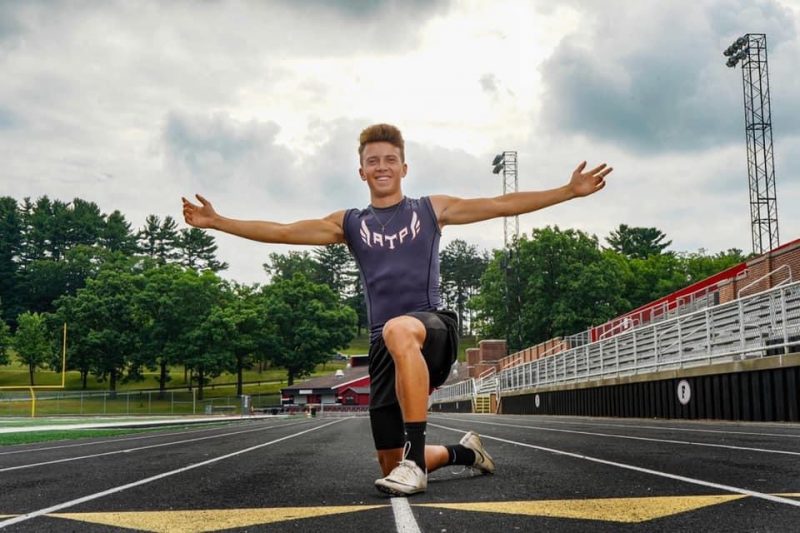
Colin Roberts believes he is a better athlete after scoliosis surgery. Photo credit: Solid Rock Photography
During Colin’s freshman year at New Philadelphia High School, a concern about scoliosis was raised during a routine sports physical. His parents, Chad and Christa, followed up and Colin began to wear a nighttime brace. But, after six months, X-rays showed his spine had a 60 degree curvature and surgery was recommended.
Although Colin was not in pain, Dr. William Schrader, a pediatric orthopedic surgeon at Akron Children’s, said the scoliosis could worsen and start affecting Colin’s breathing.
Back surgery was a “daunting” decision, said Chad.
“Sports is not everything but taking into account the time off to recover was definitely a concern, especially for such an avid athlete,” Chad said. “At the time, soccer was an even bigger deal for Colin than track. He had just made the varsity team as a freshman and was a starter as a sophomore. Having surgery before his junior season put that season in doubt. We were also just starting to consider soccer at the collegiate level, so it was a little bit devastating to think it could potentially be taken away from him.”
Drs. Schrader and Todd Ritzman performed the spinal fusion surgery in May 2019, and Colin exceeded all expectations for the speed of his recovery.
“For a few weeks after surgery, I was in bed most of the day,” said Colin. “Then, I could go to the track to walk, adding a little more time and distance each day. After that, I started doing ‘normal stuff’ like hanging out with my friends. At two months, I was able to do leg lifts. By three months, I was completely cleared for sports and returned to my soccer season.”
“Colin was the ideal patient,” said Dr. Schrader. “He pursued his recovery with the same intensity and dedication as his sports careers.”
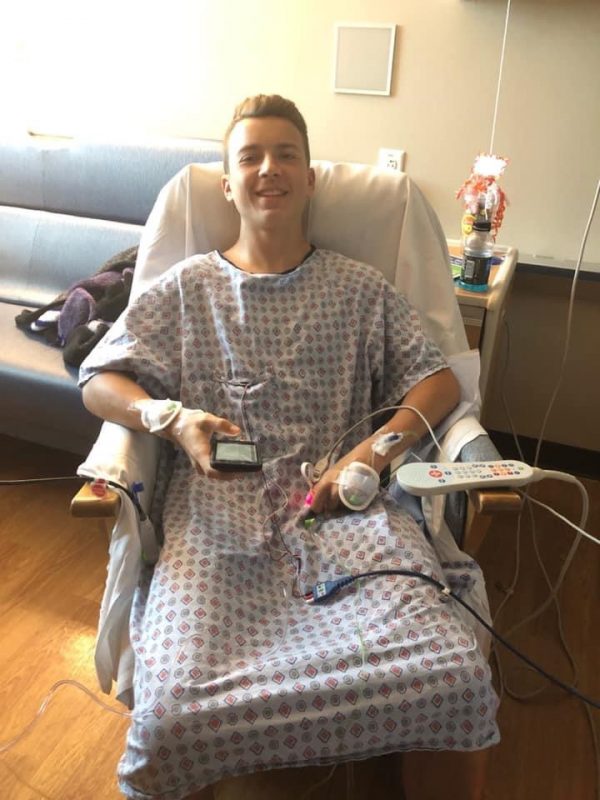
Colin Roberts had surgery to correct a 60 degree curvature of the spine. He excelled at every point in his recovery to full participation in sports.
Colin was a multi-sport athlete in high school, participating in soccer, track and field and swimming.
By his senior year, Colin was taking on multiple track events – the 4 x 200m, 4 x 400m, 4 x 100m relays, the 400m 200m and 100m sprints, and the long jump – setting the stage for his future as a college-level decathlete.
Soon he began hearing from track & field recruiters at smaller-size colleges.
“I really started thinking more about why I liked track and field – that the more effort I put into it, the more I got out of it,” Colin said. “And I liked the competitive nature of it too. Then, I really clicked with Ashland and its coaches and program.”
Once Colin got back his full cardiovascular fitness, he did notice some changes most likely the result of a straight spine.
“When I really started to push myself, I noticed my breathing was better, smoother. I was able to get a lot more oxygen,” he said.
Chad began to think about photos of Colin running on the track, one taken before the surgery and one after.
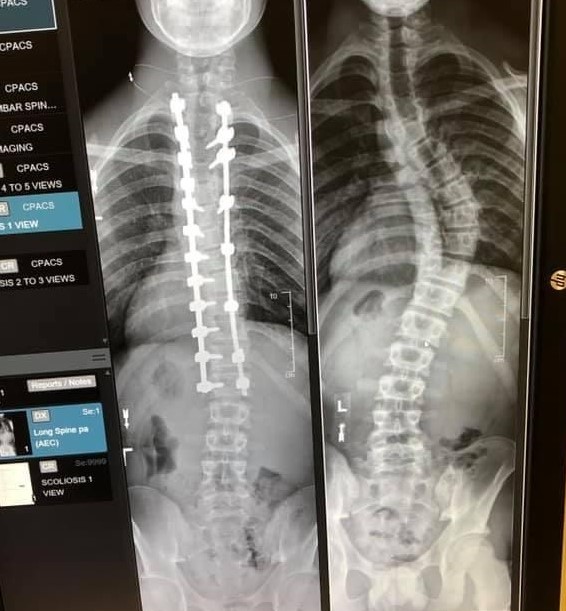
Before and after surgery X-rays show how Drs. William Schrader and Todd Ritzman corrected Colin’s spine.
“When you look at the photos, it’s amazing to see how oddly he ran before the surgery. Because the curvature of the spine, his shoulders were not even close to even,” he said. “After a soccer injury, we noticed his ribs sticking out. These were things that made more sense after the scoliosis diagnosis.”
Perhaps the biggest difference for Colin is his mental game.
He has always had a strong work ethic but he admits it got even stronger after the surgery.
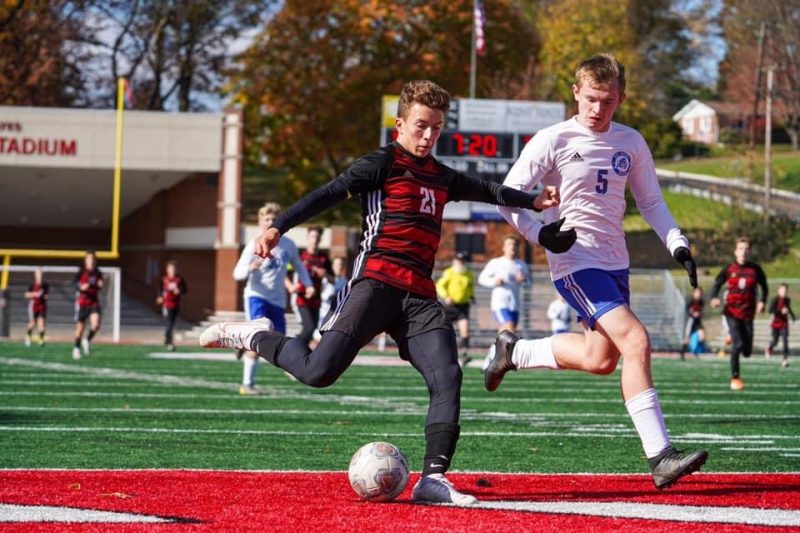
While now on the Ashland University track & field team, Colin was a multi-sport athlete in high school.
Those early days of bedrest post-surgery – of not being able to walk or even stand up by himself – left a lasting impression on such an otherwise healthy and active young man.
“I am not taking any of this stuff for granted,” he said, “because any of this can just be taken away.”
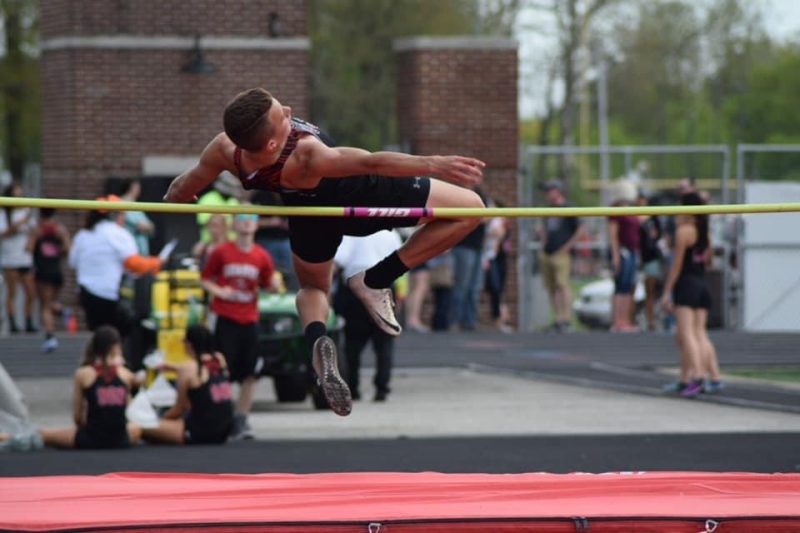
High jump is one of the 10 events Colin participates in as a college decathlete.










